A person who loves rain is called a pluviophile. Pluviophiles find joy, calmness and peace of mind in rainy days. I doubt I’ll ever be a true pluviophile but I admit there’s something magical about rain—not the life-threatening, flooding kind of rain, of course, but gentler kinds of rain like light drizzles and energetic showers.
There are many reasons to love rain: the biggest and most obvious is its ability to sustain life. Humans depend on rain water for agriculture, industry, hygiene, and electrical power. At a more granular level, individuals love the rain for how it engages the senses.
There’s the sound of rain. Whether it’s the soothing, rhythmic lullaby of raindrops in a forest, the pitter-patter of raindrops on a window or raindrops on a tin roof, the sound of rain has a broad appeal. “Steady rainfall has a monotonous cadence that lacks sudden or loud interruptions” explains the article Why Is The Sound Of Rain Calming To Us?
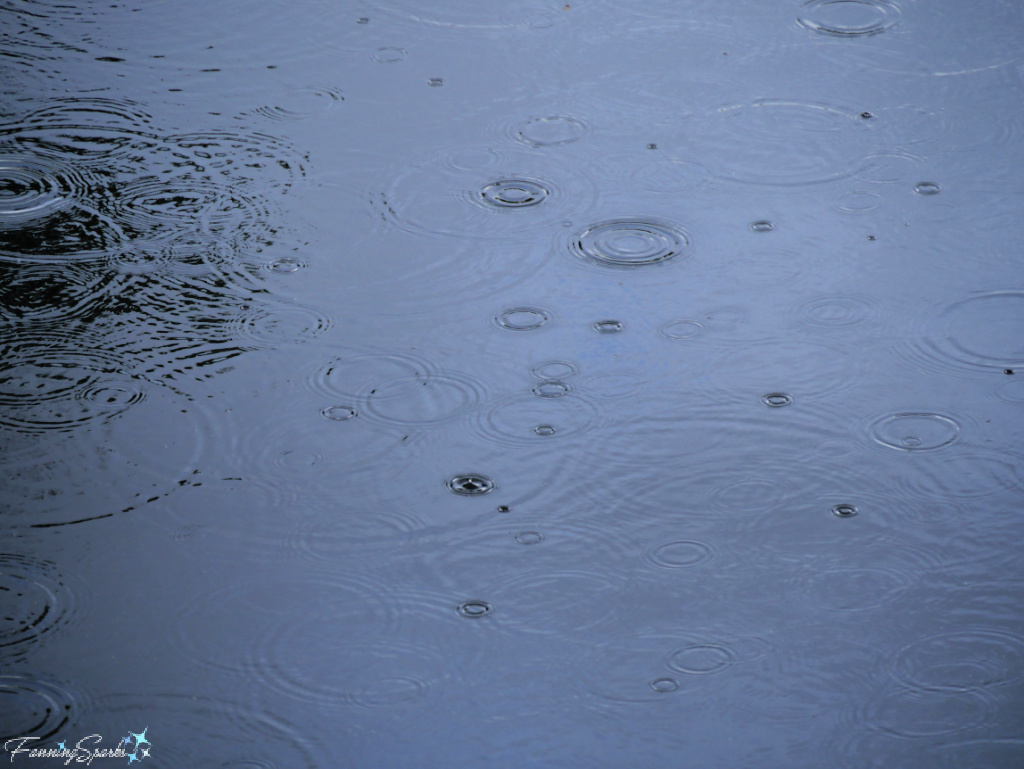 There’s a reason falling rain is one of the most popular options on a sound machine. In fact, it’s classified as “pink noise” a category of sound which, like white noise, provides a soothing background hum that calms and relaxes. The difference between pink and white noise, by the way, is that pink noise uses deeper sounds, lower sound waves and a lower pitch which tends to be gentler and more soothing. In addition to falling rain, rustling leaves, crashing waves and a steady heartbeat are examples of pink noise.
There’s a reason falling rain is one of the most popular options on a sound machine. In fact, it’s classified as “pink noise” a category of sound which, like white noise, provides a soothing background hum that calms and relaxes. The difference between pink and white noise, by the way, is that pink noise uses deeper sounds, lower sound waves and a lower pitch which tends to be gentler and more soothing. In addition to falling rain, rustling leaves, crashing waves and a steady heartbeat are examples of pink noise.
And while I’m on the subject of rain and sound, I can’t help but mention all the great songs that feature rain… Right as Rain by Adele, Singin’ in the Rain by Gene Kelly, Here Comes the Rain Again by the Eurythmics, Raindrops Keep Fallin’ on my Head by B. J. Thomas, I Can’t Stand the Rain by Ann Peebles, Rainy Days and Mondays by the Carpenters, Walkin’ in the Rain with the One I Love by Love Unlimited, and the list goes on.
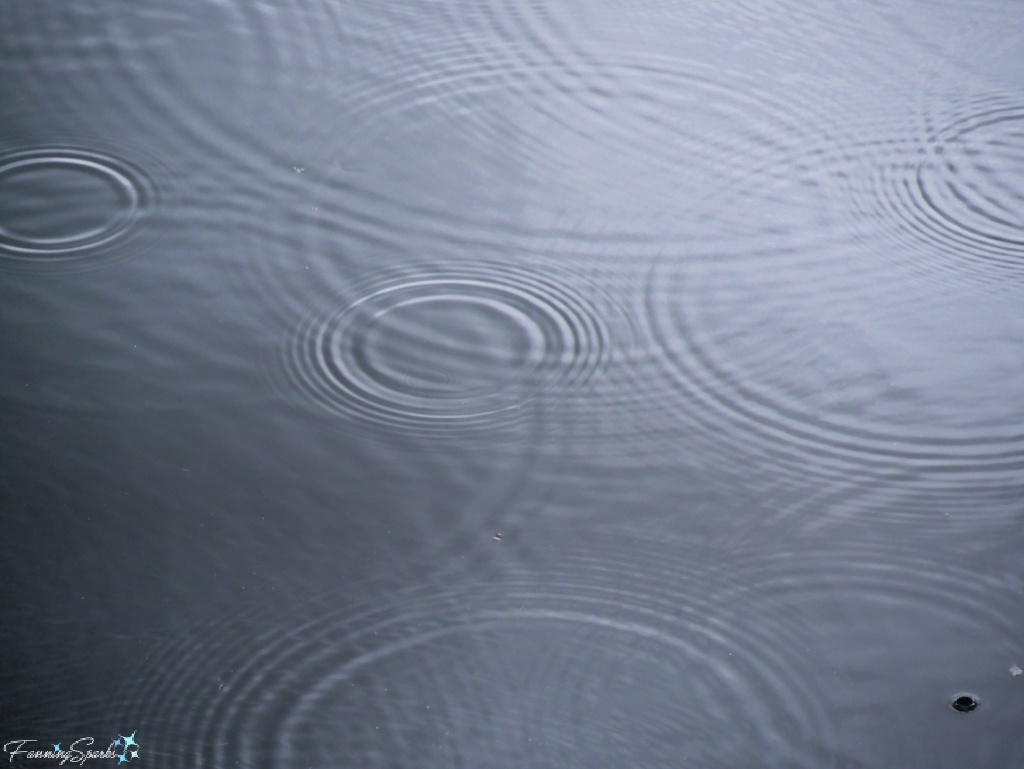 The smell of rain is also engaging. It may seem unlikely but, in fact, scientific studies have shown rain does indeed have a specific odour. It’s called “petrichor”, a term coined by two researchers, in the 1960s. The two mineral chemistry researchers from Australia, I.J. Bear and R. G. Thomas, reported “a wide diversity of rocks and mineral aggregates … [have] the capacity to evolve a characteristic and significant odour on moistening the previously dry material”.
The smell of rain is also engaging. It may seem unlikely but, in fact, scientific studies have shown rain does indeed have a specific odour. It’s called “petrichor”, a term coined by two researchers, in the 1960s. The two mineral chemistry researchers from Australia, I.J. Bear and R. G. Thomas, reported “a wide diversity of rocks and mineral aggregates … [have] the capacity to evolve a characteristic and significant odour on moistening the previously dry material”.
The study includes this fascinating story: “We have learned from the Indian Standard Association that the production and concentration of argillaceous odour from baked clay have been, for many years, the basis of a small perfumery industry centered near Kannauj, … India. Baked clay disks, exposed there under the open sun during the hot summer months of May and June, are collected before the wet season and are steam-distilled and the vapours containing the odour and associated products are absorbed in sandalwood oil. The perfume so obtained is known as ‘matti ka attar’, which may be translated as ‘earth perfume’.”
Evidence of a recent rain shower can be seen on this picturesque country lane in Grand Pré, Nova Scotia. What’s not visible, but easy to imagine, is the petrichor smell of fresh earth and clean air.
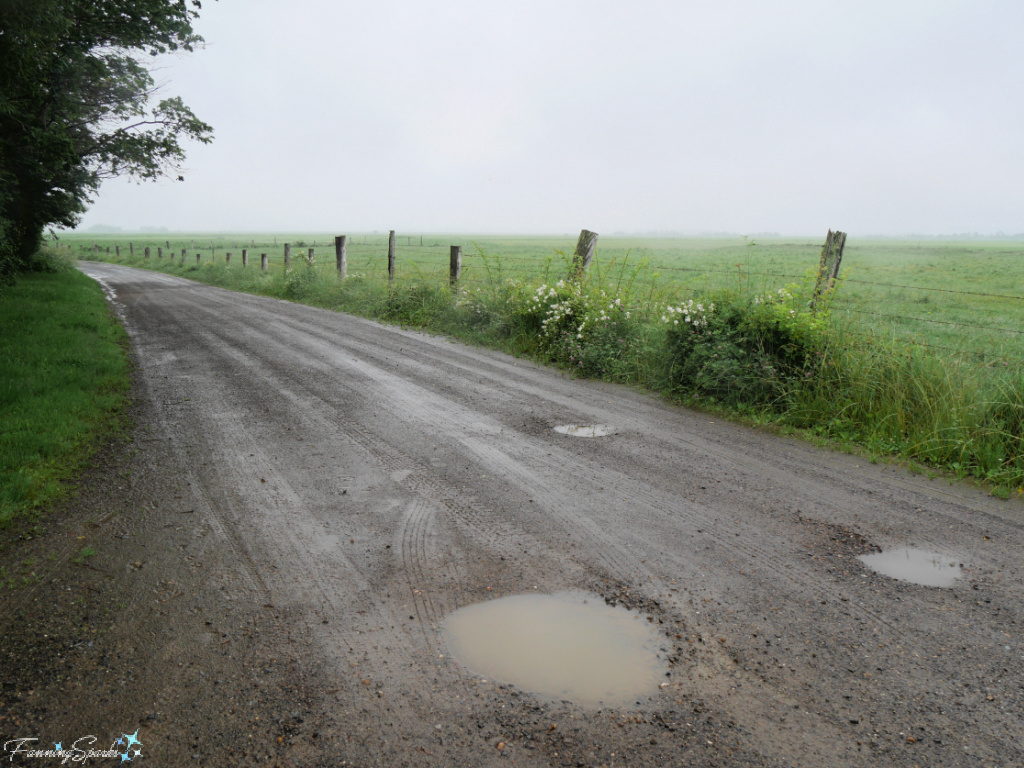 There is something magical about the light before and after rain—it’s diffused and casts the world in a gentle softness. In the below scene, light rain lends a soft gentleness to the iconic view of the Grand Pré Memorial Church.
There is something magical about the light before and after rain—it’s diffused and casts the world in a gentle softness. In the below scene, light rain lends a soft gentleness to the iconic view of the Grand Pré Memorial Church.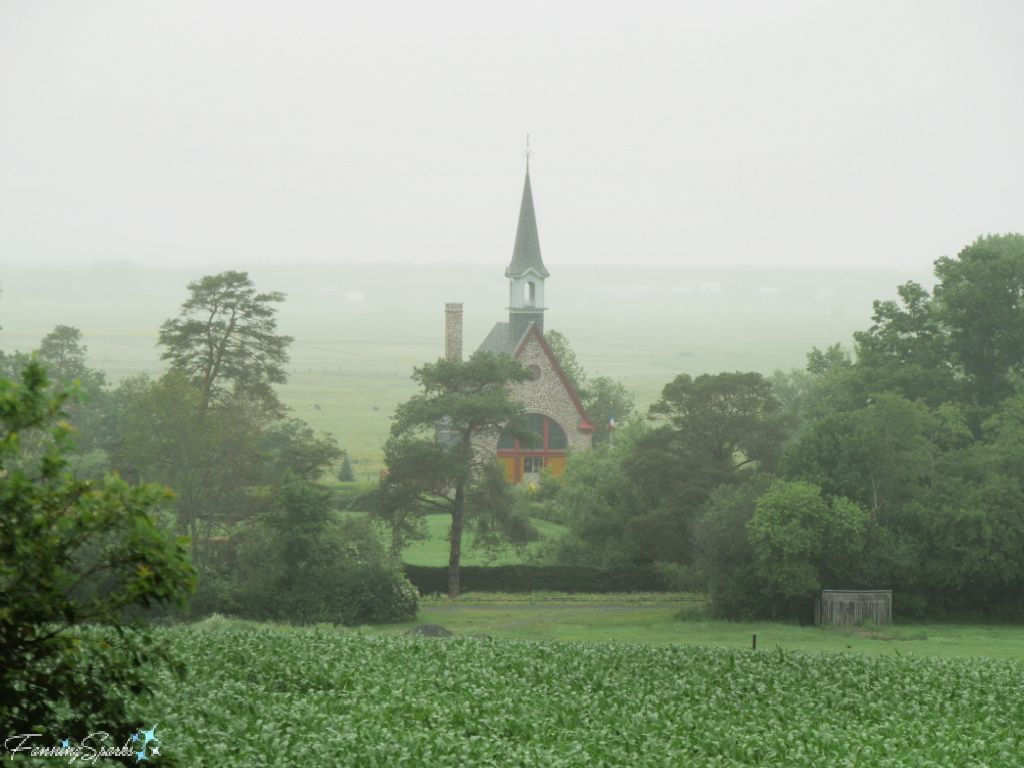 For comparison, here’s the same view on a clear, sunny day. Both views are beautiful but, in my opinion, the rainy-day scene has more character.
For comparison, here’s the same view on a clear, sunny day. Both views are beautiful but, in my opinion, the rainy-day scene has more character.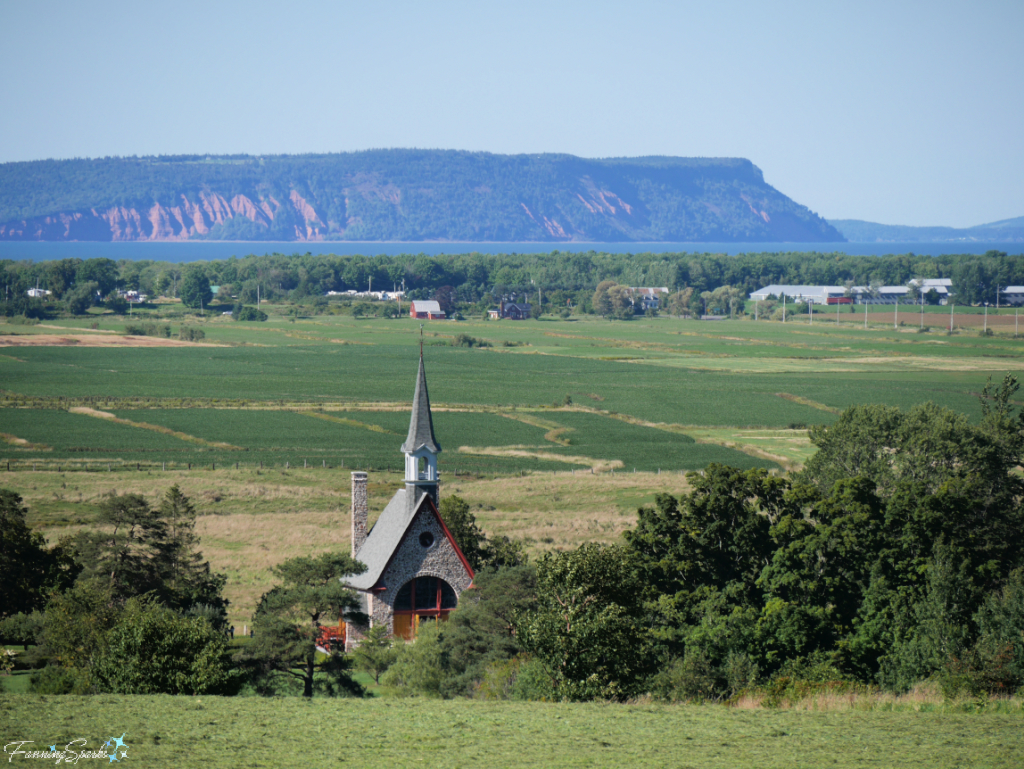
In addition to the benefits of soft light, rain gives shutterbugs the gift of raindrops! Looking like tiny pearls on a strand, raindrops embellish the vineyards at the Domain de Grand Pré winery.
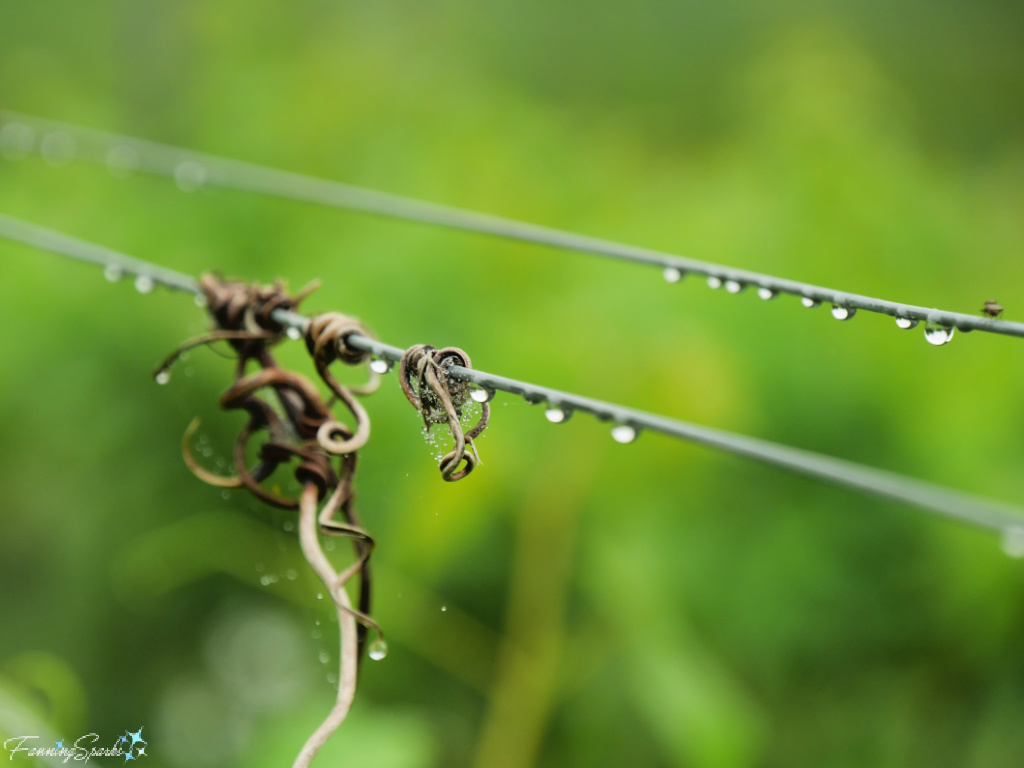

The gorgeous flower gardens at the winery were the source of several after-the-rain vignettes.
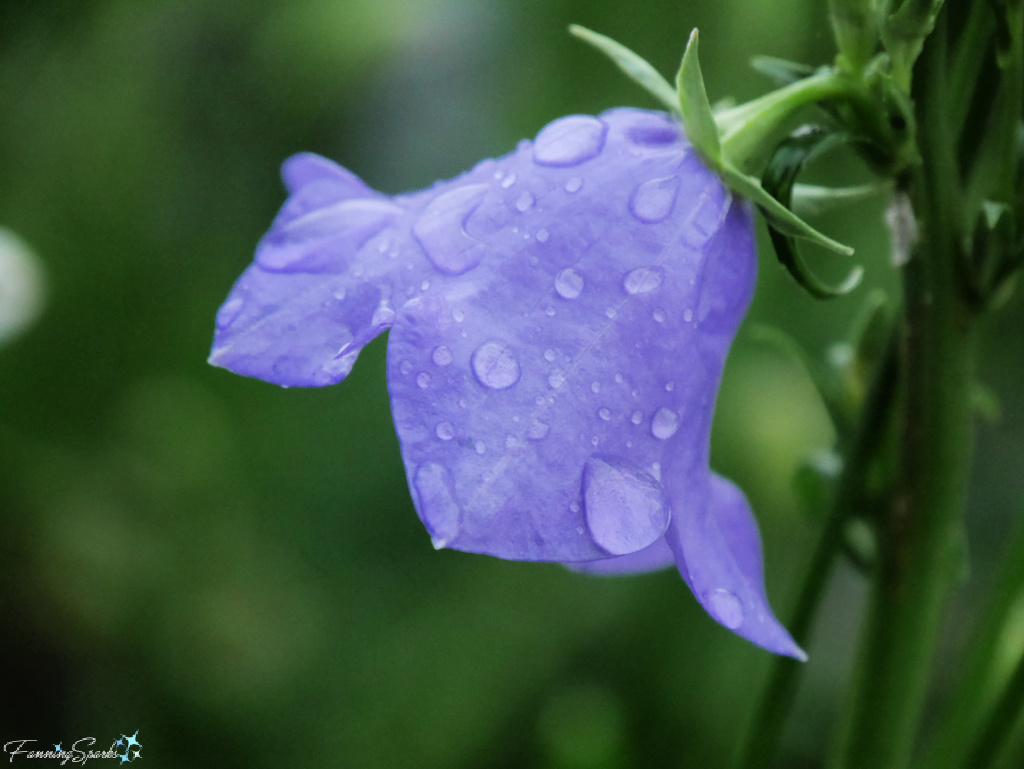
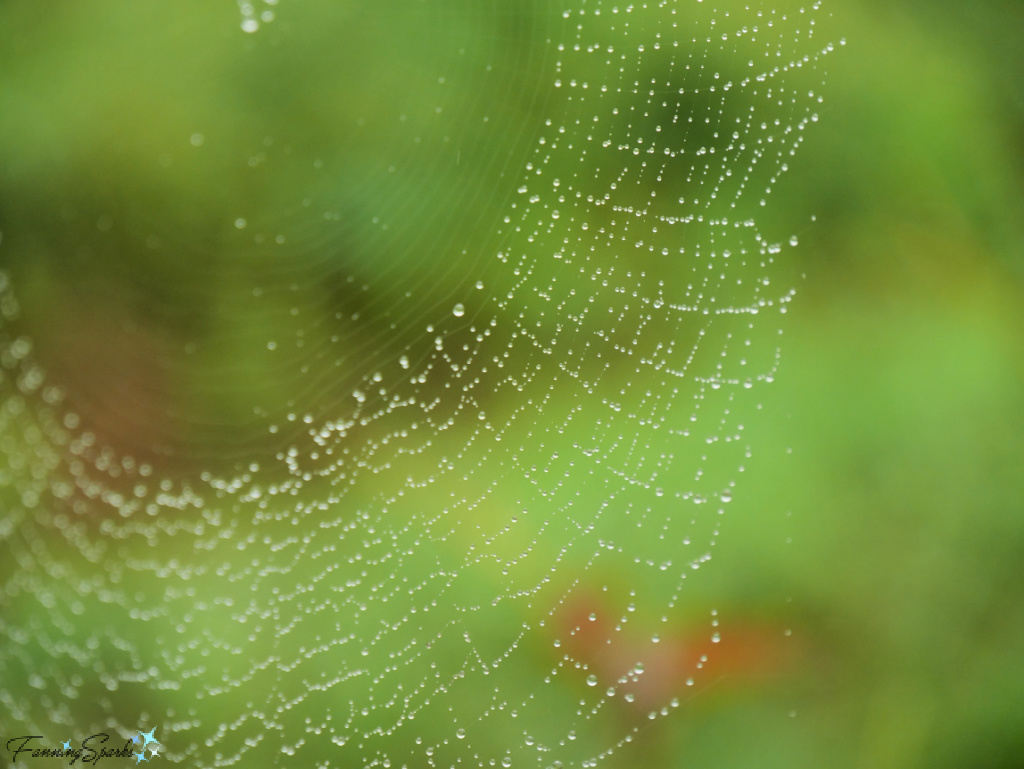
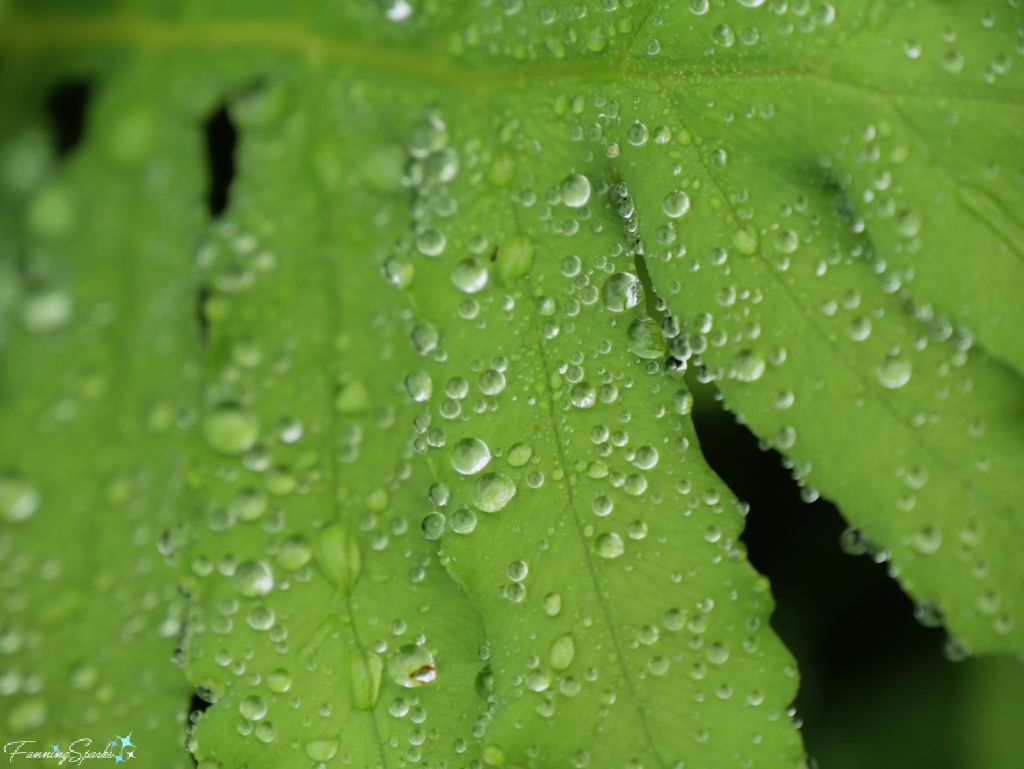
Rain can also provide unique photographic subjects in the form of bubbles and foam. Fast-flowing rivers, streams and creeks like this one at Liscombe, Nova Scotia churn up the water …
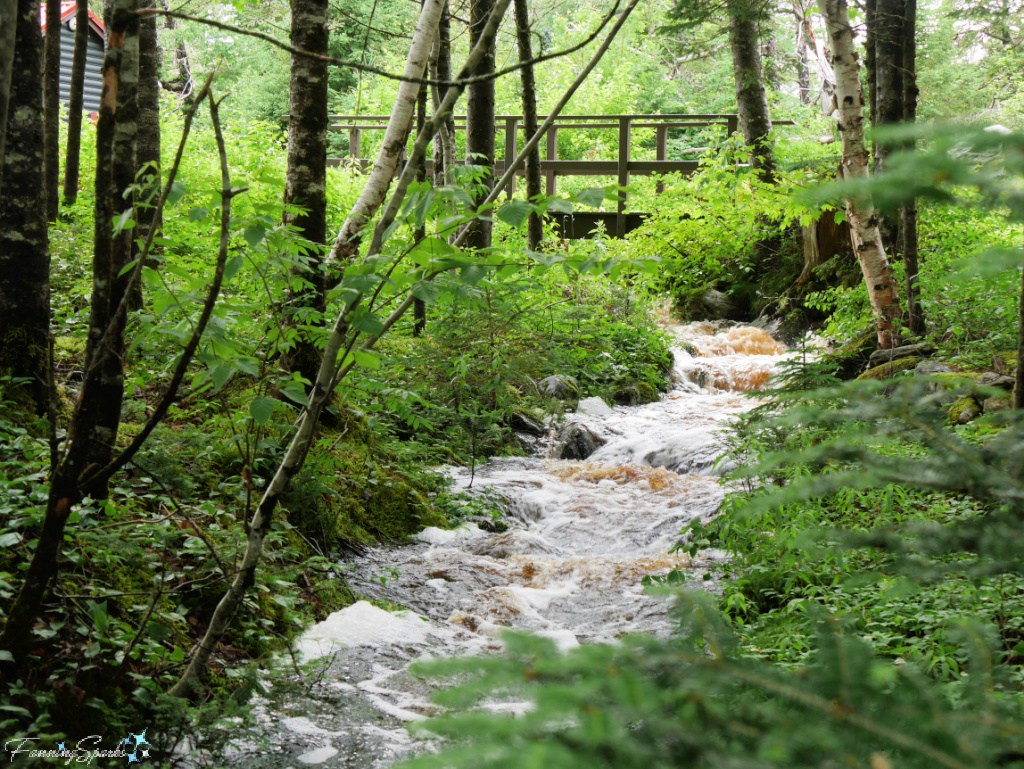
… and create lots of bubbles.
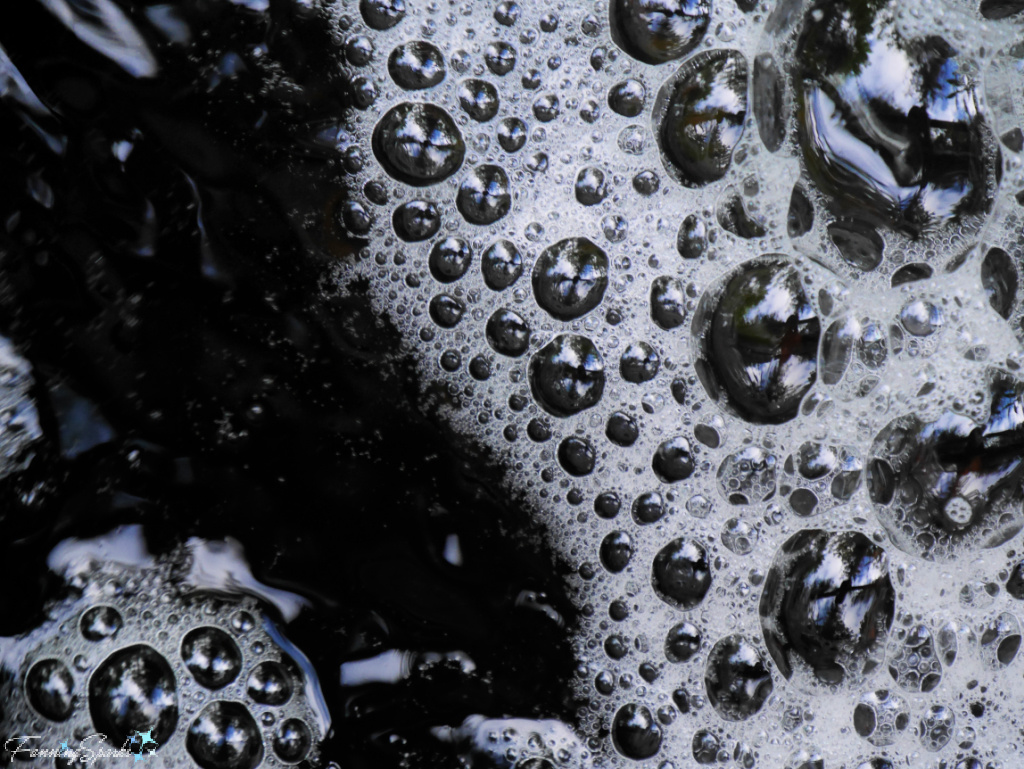
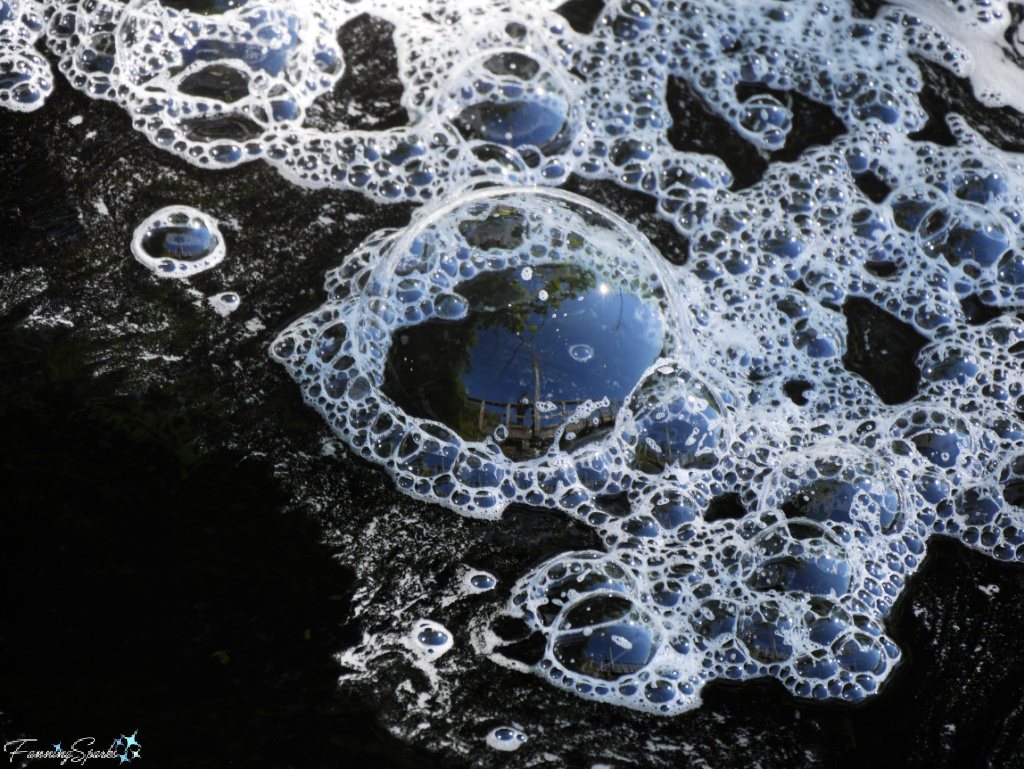 The rushing water can also create a surprising amount of foam. I’ve learned it’s called “stream foam”. At first glance, one might assume the stream foam is due to pollution but it’s not. “Stream foam or suds are often seen on windy days, accumulating against logs, on the banks of streams or along lake shores. This is most often a harmless natural occurrence. Foam can be found during autumn when leaves are falling, throughout spring when plants lose their buds, and on warm summer days. But what causes the formation of stream foam?
The rushing water can also create a surprising amount of foam. I’ve learned it’s called “stream foam”. At first glance, one might assume the stream foam is due to pollution but it’s not. “Stream foam or suds are often seen on windy days, accumulating against logs, on the banks of streams or along lake shores. This is most often a harmless natural occurrence. Foam can be found during autumn when leaves are falling, throughout spring when plants lose their buds, and on warm summer days. But what causes the formation of stream foam?
Naturally occurring stream foam can be off-white, light tan, or brownish and can have a fishy or earthy odor. It’s formed by dissolved organic matter, usually dissolved organic carbon (DOC). DOC results from the breakdown of organic debris, such as sticks, leaves, and tannins and watershed soils that hold organic materials. One way to describe organic matter is to compare it to a tea bag. The earth and its soils are rich in organic materials from the breakdown of plants and animals and as water moves through the soils of a watershed it collects the organic matter and then darkens just like a cup of hot tea. Once in a stream, the color largely dissipates but can tint the foam it produces.”

The article, What Causes Foam on Rivers?, by the Ausable River Association goes on to explain, “In a stream, DOC acts as a surfactant reducing the surface tension of water – a common example of a surfactant is olive oil. DOC interacting with the moving water causes tiny air bubbles to form, creating an area of lower surface tension so water subsequently flows away from that spot and foam can stabilize there. Natural foam build-up is more prevalent in streams and rivers after rainfall because there’s more water moving through the ground and more organic matter being dissolved. With higher water, more turbulent conditions form bubbles, and the DOC attaches to these forming foam at the surface.”
Whatever the cause, the fascinating abstract patterns created by the bubbles and foam were an unexpected bonus.
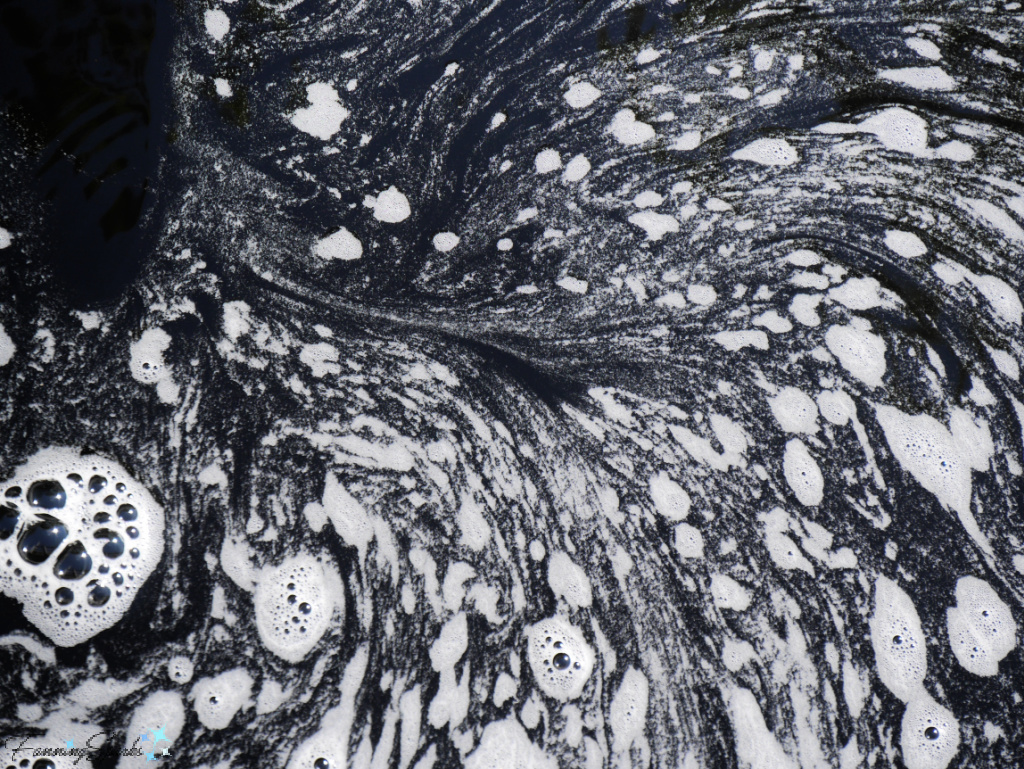
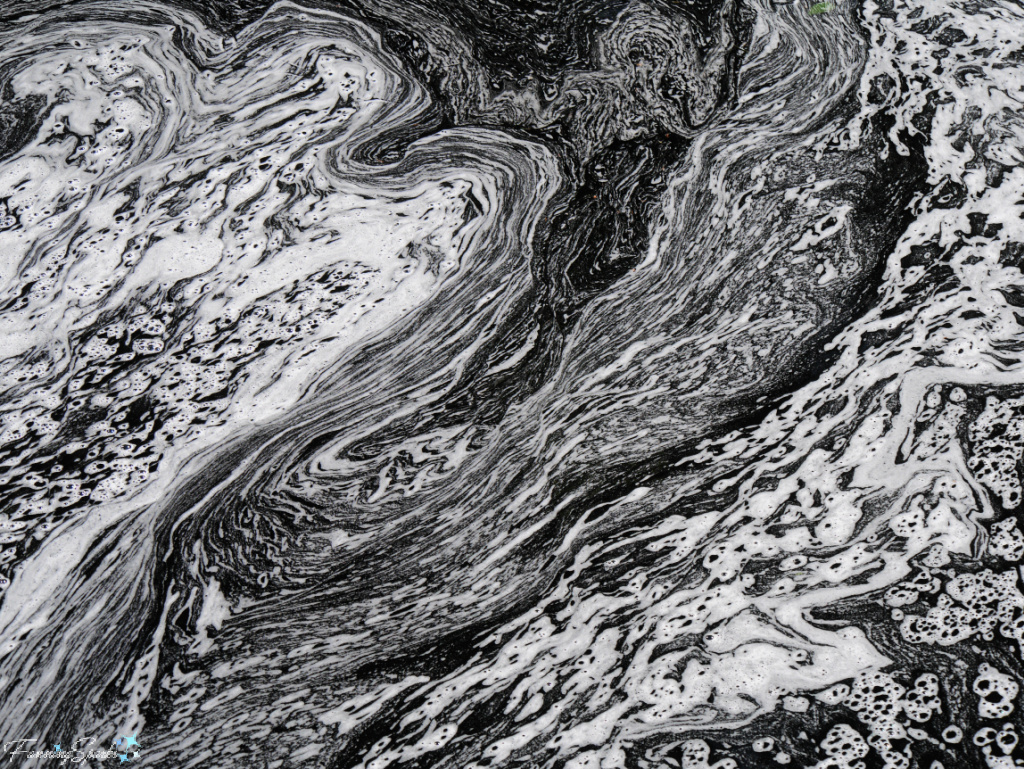
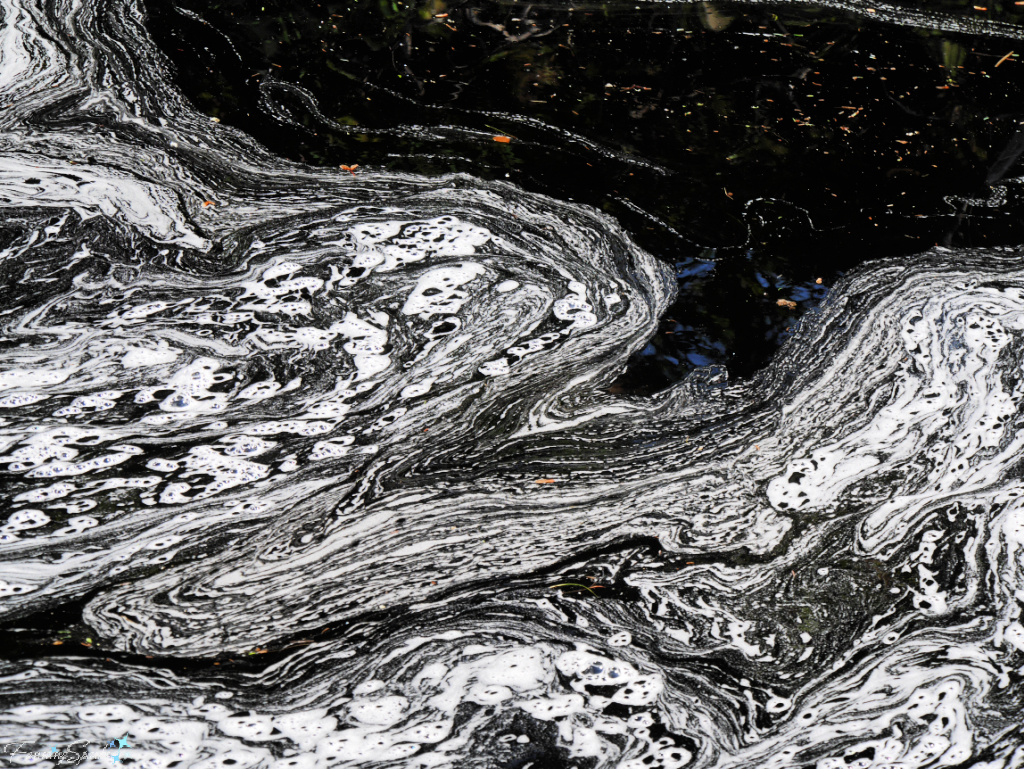
I’ll wrap up this Right as Rain tour with a flashback to my recent trip to Japan. This photo, featuring cherry blossom petals floating in the Hirosaki Castle moat, was also taken in the rain.
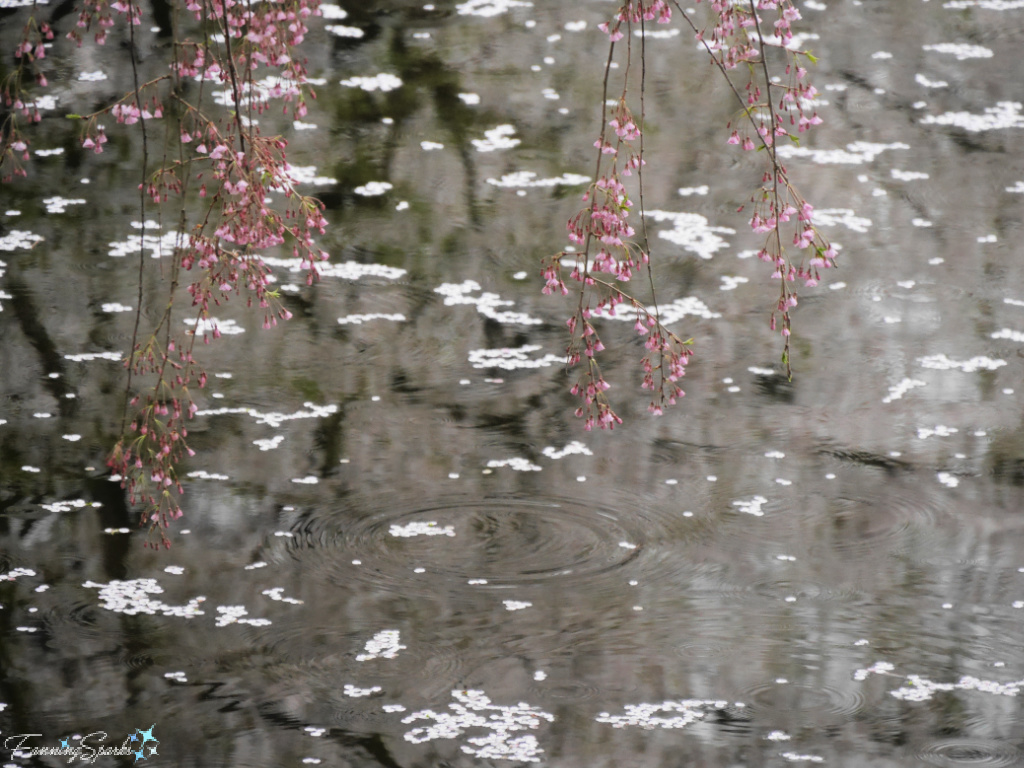
More Info
Grand Pré is located in Nova Scotia, Canada. Check out the previous FanningSparks blog post, The Enduring Tale of Evangeline, the Experience Grand Pré website or the Parks Canada – Grand-Pré National Historic Site web page to learn more about this fantastic historic site.
For more information about the sound of rain, see the article Why Is the Sound of Rain Calming To Us? by Molly Raby.
For more information about the smell of rain, see the 1964 NATURE article Nature of Argillaceous Odour by Miss I.J. Bear and R. G. Thomas.
I often travel to Nova Scotia to visit family and explore this intriguing province. Check out this FanningSparks’ Travel > Canada > Nova Scotia category index to learn more about my Nova Scotian adventures.
Today’s Takeaways
1. A pluviophile is someone who loves rain.
2. The sound and smell of rainfall has uniquely appealing characteristics.
3. Rain provides unique photographic opportunities.


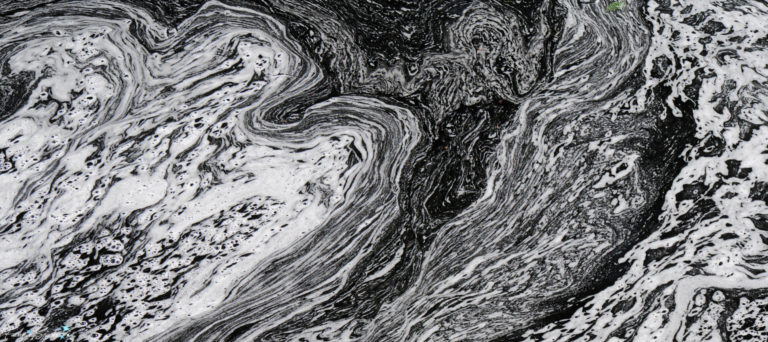


Comments are closed.